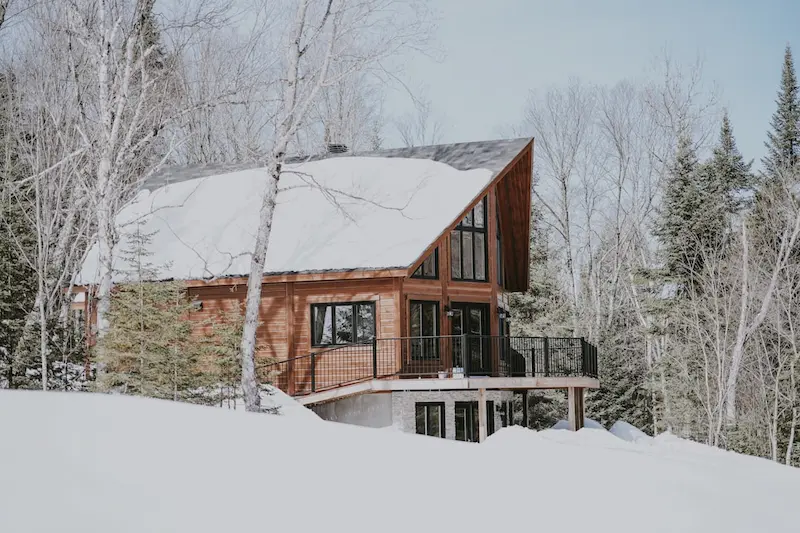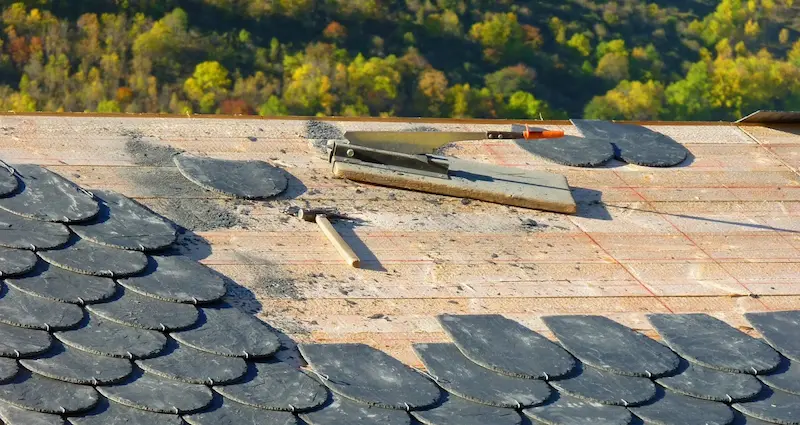Table of Contents
Your home’s roof is its first line of defense against the elements, making it one of the most important components to maintain. Weather conditions play a significant role in the wear and tear of your roof, and understanding how different climates impact its longevity can help you stay on top of necessary repairs and maintenance.
From scorching heat to heavy snowfall, various weather patterns have unique effects on your roof’s structure. Read on to explore how weather conditions influence roof maintenance needs and what you can do to keep your roof in optimal condition.
Extreme Heat and Sun Exposure
Hot, sunny weather can cause significant damage to your roof over time. Prolonged exposure to direct sunlight leads to the deterioration of roofing materials, particularly asphalt shingles, which can become brittle and crack under intense heat. Consistent exposure to UV rays can speed up the aging process of roofing materials, making regular inspections crucial for homes in sunny climates.
Heat affects the shingles and can even cause the roof deck to expand and contract, potentially resulting in warping or separation. Homes located in regions with prolonged periods of hot weather should have their roofs inspected annually to address any heat-related issues early on. Professional roofers like Myroofpro can easily get the job done. If your roof needs repairs or a full replacement, it’s always best to call in the professionals rather than attempting an installation on your own.
Heavy Rainfall and Storms
When heavy rain falls, it can collect in areas where shingles have become damaged or loose, allowing water to penetrate the underlying layers of your roof. Over time, this can lead to rotting wood, mold growth, and even structural damage to your home’s interior.
Thunderstorms can bring strong winds that loosen or tear shingles, making your roof more vulnerable to future weather events. Gutter maintenance is essential in rainy regions since clogged gutters can cause water to back up onto the roof, increasing the risk of leaks. Regular cleaning and inspection of both your roof and gutters are necessary to prevent water-related issues.
Snow and Ice Damage
In colder climates, snow and ice present significant challenges for roof maintenance. Heavy snow accumulation can place immense pressure on your roof, potentially resulting in sagging or even collapse in extreme cases. Ice dams—caused when melting snow refreezes at the roof’s edge—can trap water under shingles.
Ice buildup can also block drainage systems, causing water to pool on the roof. To prevent damage from snow and ice, remove excess snow regularly and ensure proper insulation and ventilation in your attic. It will keep your roof’s temperature consistent, reducing the risk of ice dams forming.
High Winds and Hurricanes
Particularly during severe storms or hurricanes, high winds can wreak havoc on your roof. Strong gusts can lift shingles, tear them off entirely, or even damage the underlying roof structure. Once shingles are missing or damaged, the roof becomes vulnerable to water infiltration, leading to more extensive repairs.
Homes in hurricane-prone areas are particularly susceptible to wind damage, and roofs in these regions need to be inspected regularly. Reinforcing the roof with hurricane straps or clips and ensuring shingles are securely fastened can provide additional protection. After any significant wind event, check your roof for missing or damaged shingles and have repairs made as soon as possible to prevent further issues.
Humidity and Moisture
High humidity levels can also affect your roof’s maintenance needs, especially in tropical or coastal regions. Excess moisture in the air can contribute to the growth of algae, moss, or mold on your roof, which can damage shingles and reduce their lifespan. Moss and algae trap moisture against the surface of the roof, weakening the materials and leading to potential leaks or water damage.
Regular cleaning of your roof to remove algae and moss is necessary in humid climates. Consider installing zinc or copper strips along the roofline, which can help prevent moss and algae growth by releasing ions that inhibit their development. Make sure that your attic has proper ventilation and prevent excess humidity from affecting your roof.
Hailstorms and Physical Impact

Hailstorms can cause significant damage to your roof in just a few minutes. Larger hailstones can crack or dent shingles, leading to weakened areas that are more prone to leaks. Even if the damage isn’t immediately visible, the impact of hail can reduce the lifespan of your roofing materials and make your home more vulnerable to future storms.
After a hailstorm, inspect your roof or hire a professional to assess the damage. Depending on the severity, you may need to replace individual shingles or, in some cases, the entire roof. Homeowners in areas prone to hail should consider installing impact-resistant shingles to minimize the risk of damage during storms.
Weather conditions significantly affect your roof’s maintenance needs, and being proactive about roof care can save you from costly repairs down the line. Whether your home faces extreme heat, heavy snowfall, or high winds, regular inspections and timely maintenance are essential to preserving the integrity of your roof. By staying informed and taking action when necessary, you can extend the life of your roof and ensure your home remains well-protected against the elements.
Want to explore something different? 4 Reasons Why Gynaecologists Are Important for Reproductive Health

